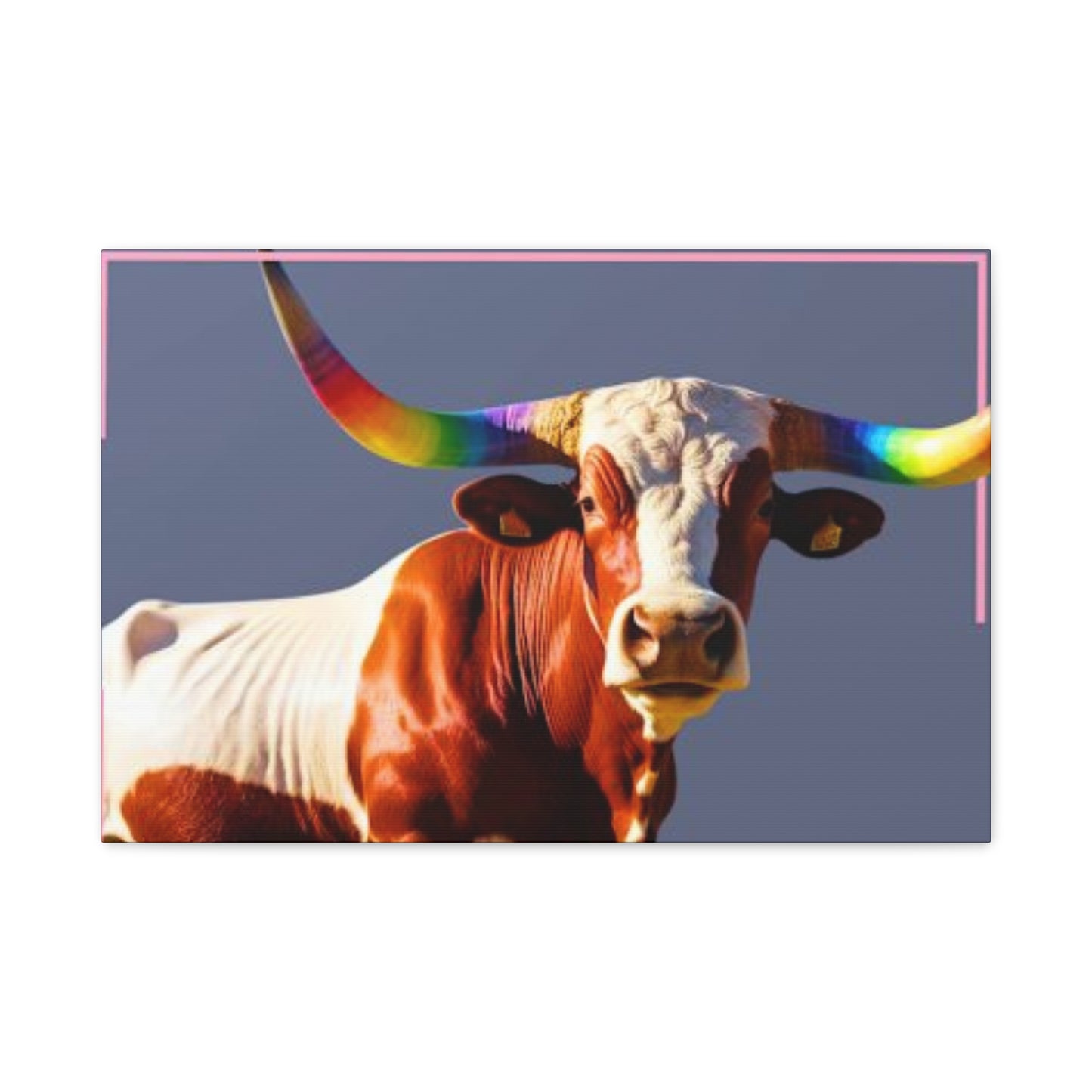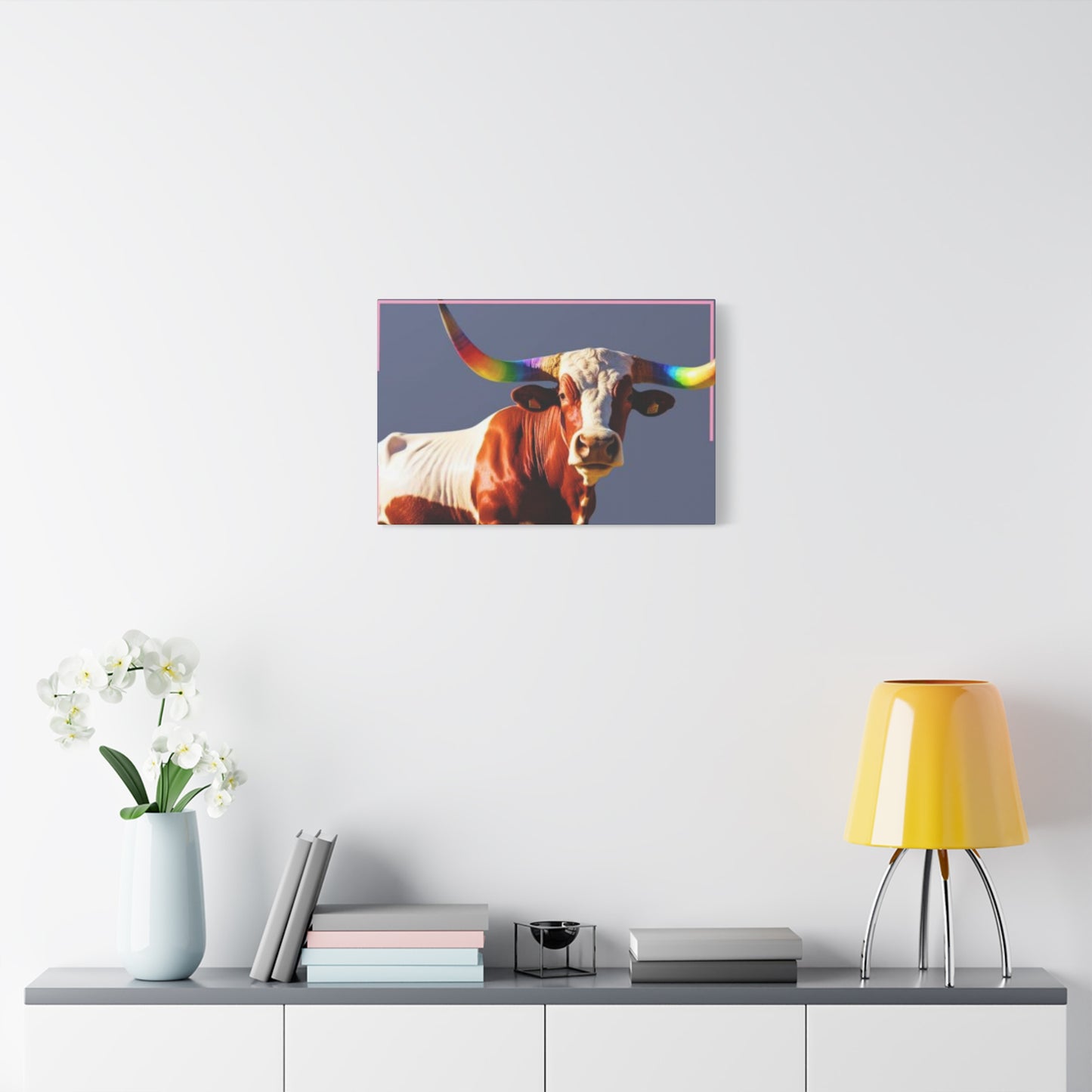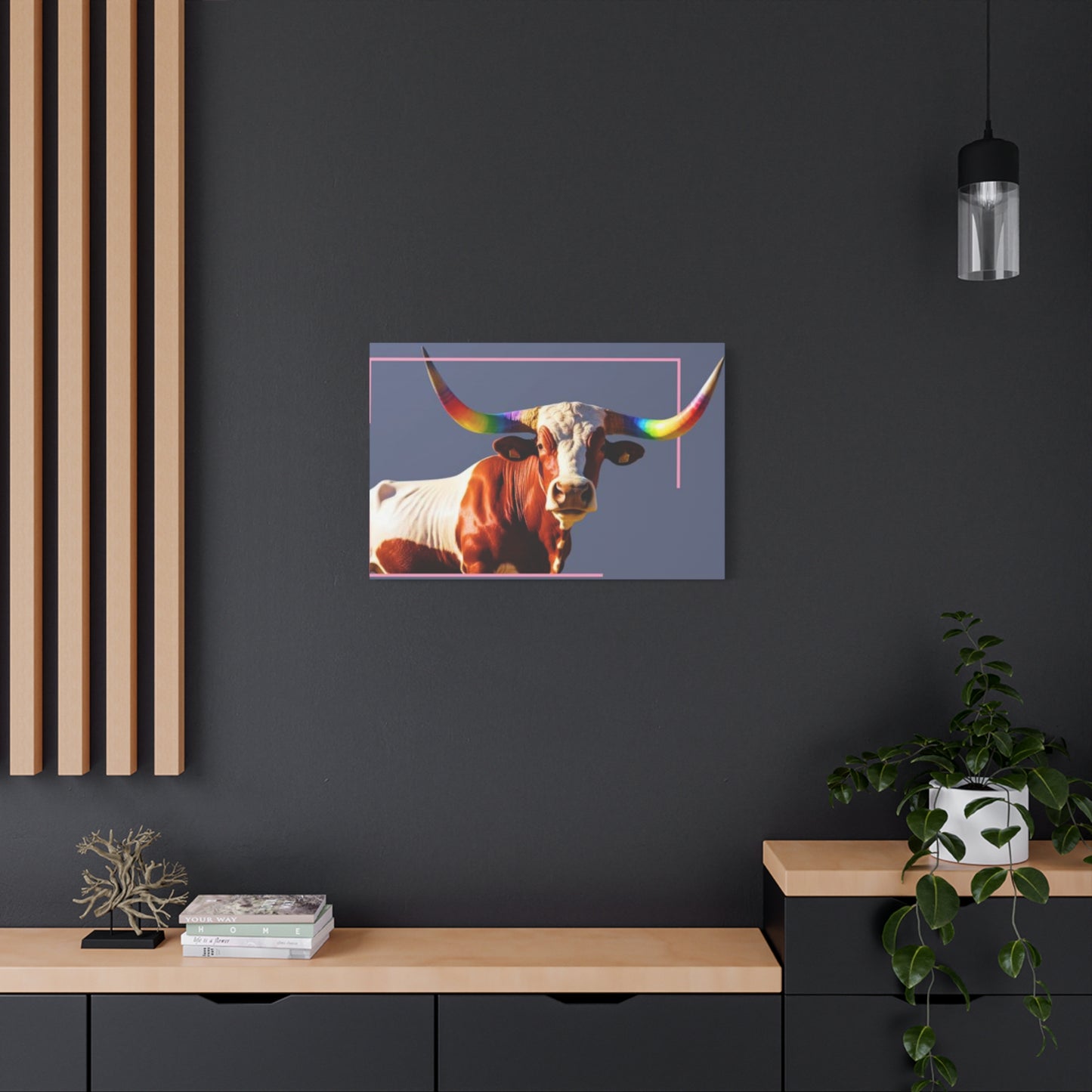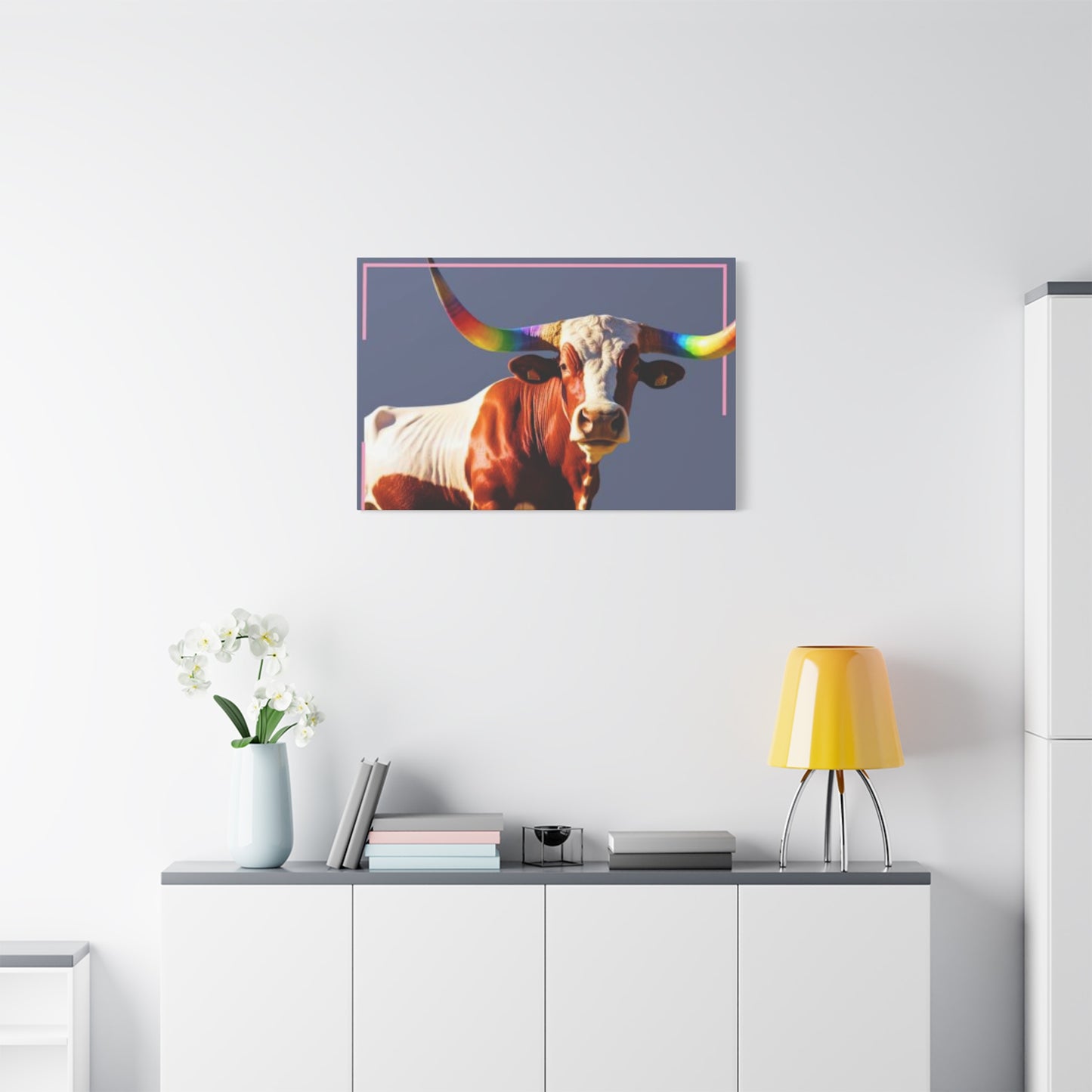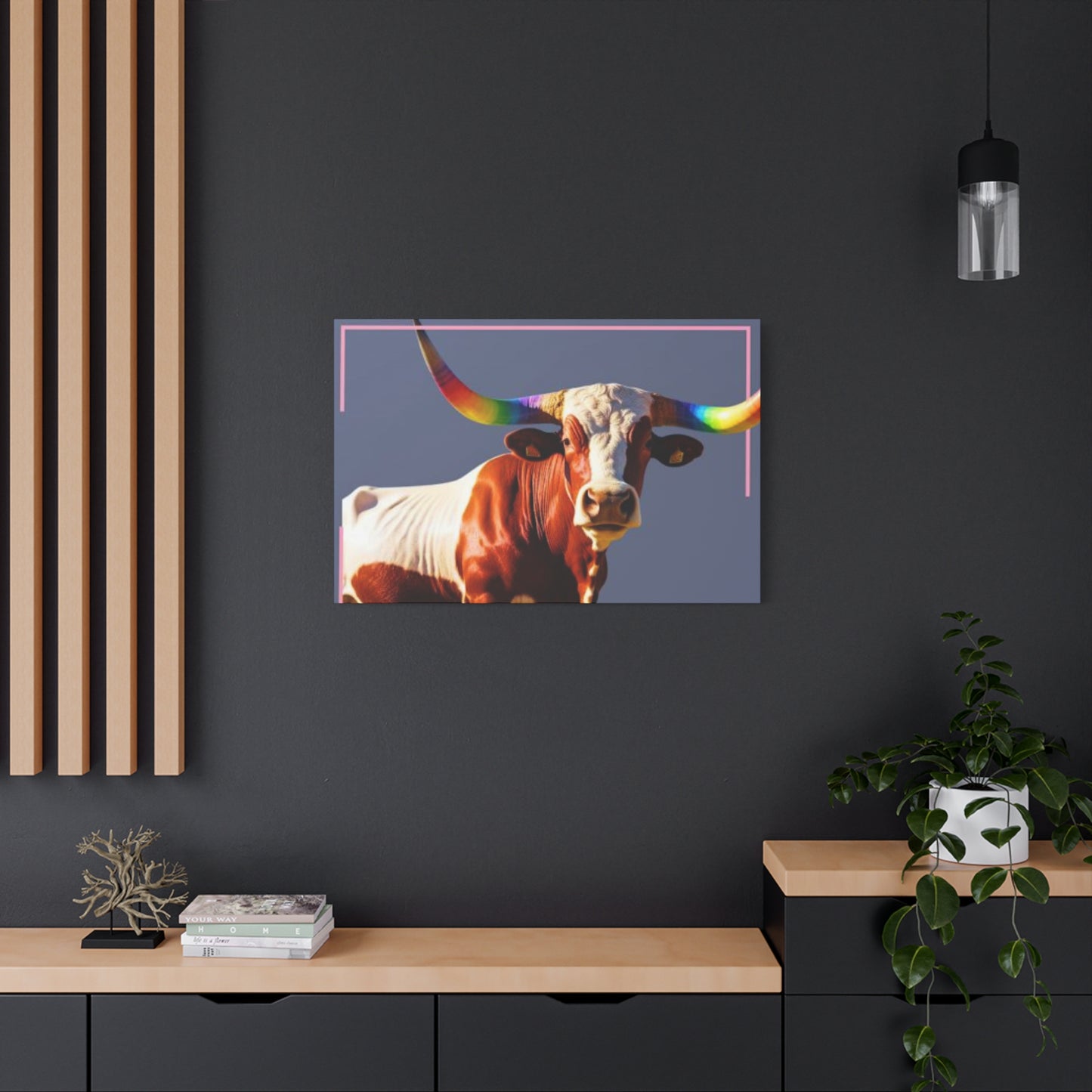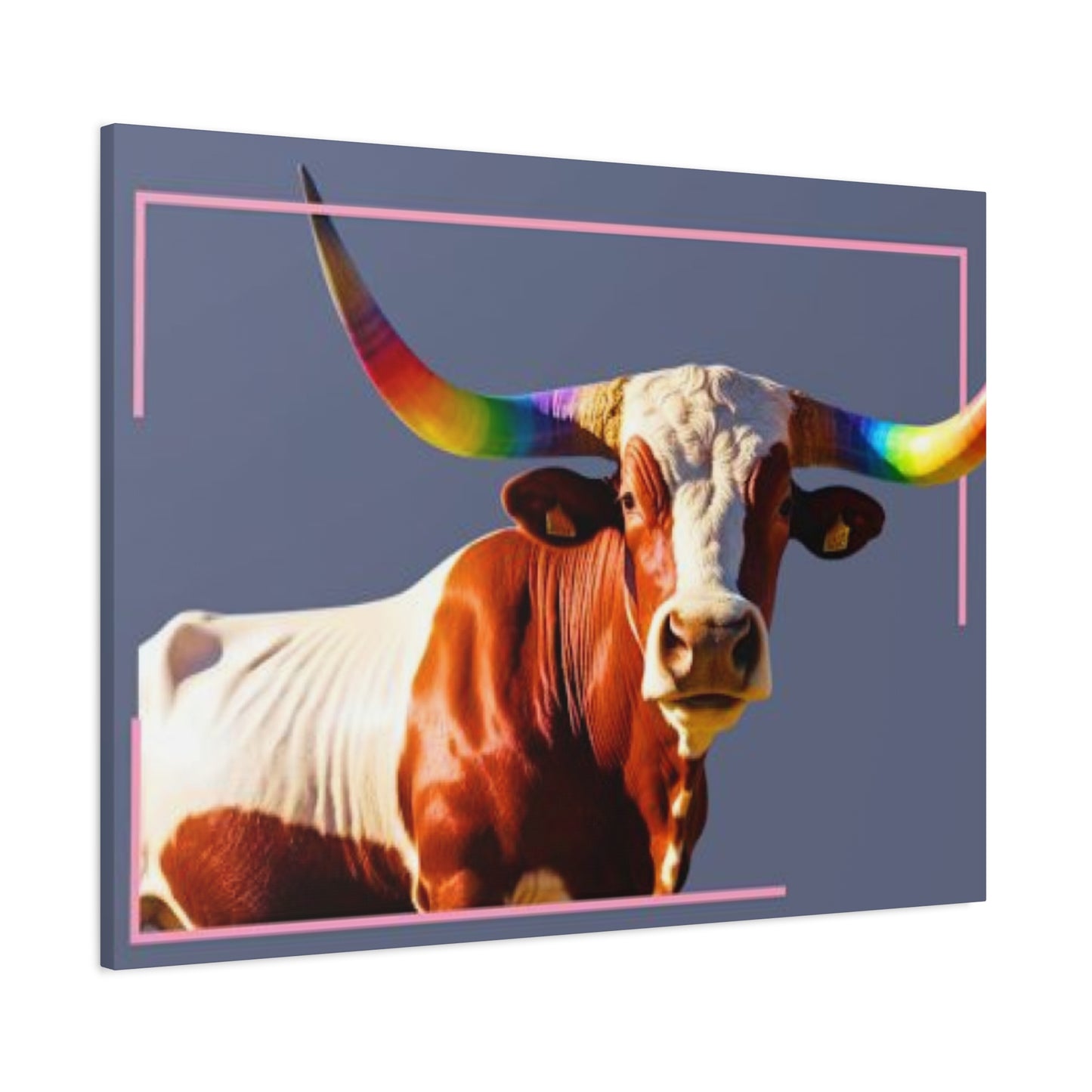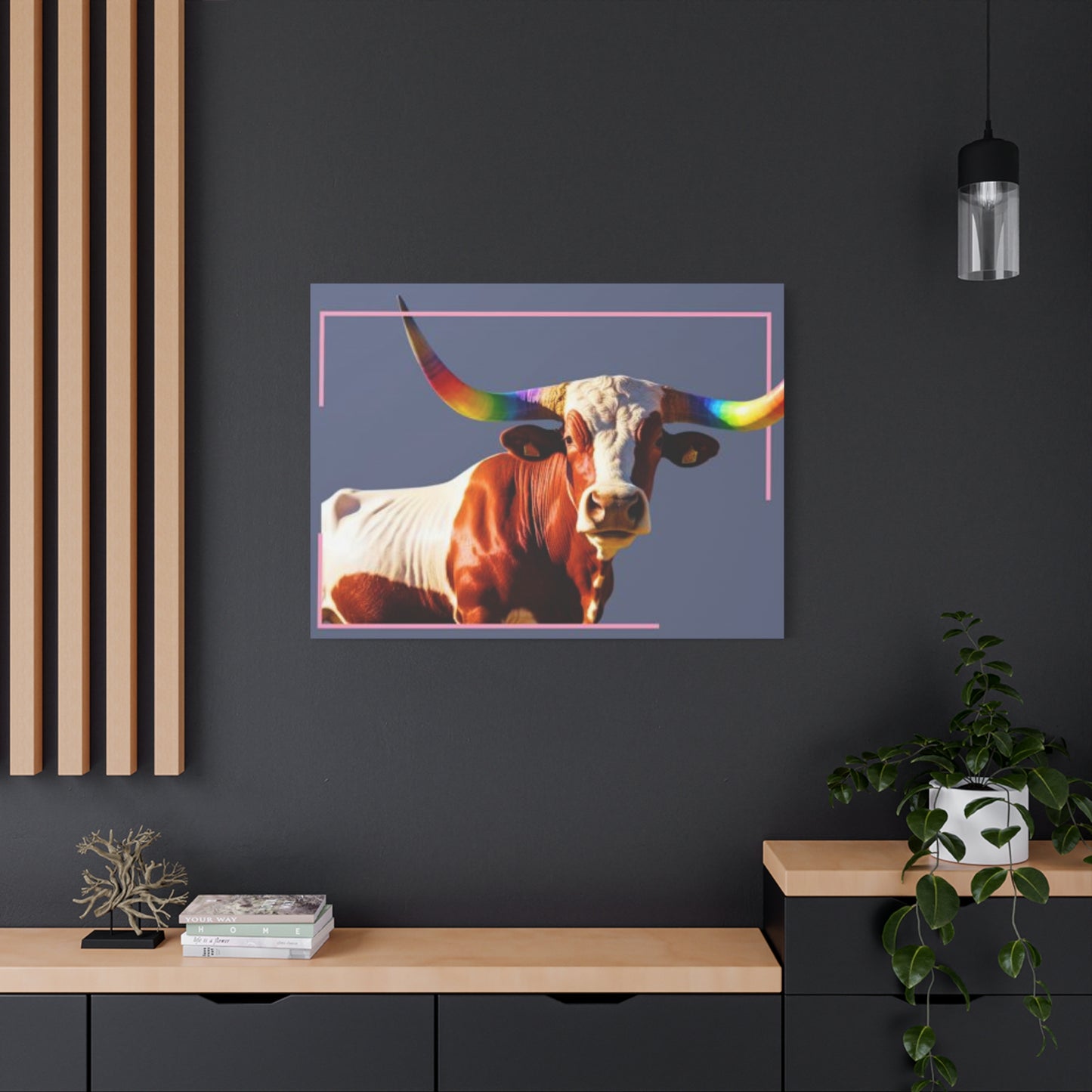Vibrant Long horn Wall Art: Spectacular Colorful Bull Skull Decorating Ideas
Embracing the beauty of colorful longhorn skull decor brings an extraordinary element of southwestern charm and artistic flair to any environment. These magnificent pieces represent more than mere decorative objects; they embody the rich cultural heritage of the American West while offering contemporary artistic expression through vibrant color palettes and innovative design approaches.
The traditional longhorn skull has evolved from its roots as a symbol of the frontier into a sophisticated art form that captures attention and sparks conversation. Modern artists and designers have reimagined these iconic shapes, transforming them into stunning focal points that command attention in residential and commercial settings alike. The incorporation of bold, vivid colors transforms the classic bone-white appearance into dynamic masterpieces that reflect personality and style preferences.
Contemporary longhorn skull decor often features intricate hand-painted details, metallic accents, and mixed-media applications that create depth and visual interest. Artists employ various techniques including airbrushing, stenciling, and freehand painting to achieve striking effects that range from subtle gradations to dramatic color contrasts. These pieces serve as excellent conversation starters and demonstrate the owner's appreciation for unique artistic expression.
The versatility of colorful longhorn skull decor allows for seamless integration into diverse decorating schemes, from rustic ranch-style homes to modern urban lofts. The key lies in selecting pieces that complement existing color schemes while adding an element of unexpected sophistication. Many collectors appreciate how these decorative elements can serve as bridge pieces, connecting traditional western themes with contemporary aesthetic sensibilities.
When selecting colorful longhorn skull decor, consideration should be given to the surrounding environment, lighting conditions, and overall design objectives. Pieces featuring warm earth tones work exceptionally well in cozy gathering areas, while those incorporating cool blues and greens can create calming atmospheres in bedrooms or meditation areas. The strategic placement of these decorative elements can dramatically enhance the visual impact and create memorable impressions for visitors and residents alike.
Abstract Longhorn Wall Art
Abstract longhorn wall art represents a fascinating intersection of traditional western imagery and contemporary artistic expression, creating pieces that challenge conventional expectations while honoring the iconic symbolism of the longhorn. These artistic interpretations move beyond literal representations, instead focusing on capturing the essence, energy, and emotional impact of these majestic creatures through innovative visual approaches.
Modern abstract longhorn art often employs geometric shapes, flowing lines, and unexpected color combinations to create dynamic compositions that evoke the spirit of the American West without relying on realistic depictions. Artists working in this genre frequently experiment with asymmetrical designs, fragmented forms, and layered textures that suggest movement and vitality. The result is artwork that speaks to viewers on an emotional level while maintaining clear connections to its western heritage.
The beauty of abstract longhorn wall art lies in its ability to fit seamlessly into various decorating contexts while maintaining its distinctive character. These pieces work particularly well in contemporary homes where residents desire subtle nods to western themes without overwhelming existing decor. The abstract nature allows viewers to interpret the artwork personally, making each piece a unique addition that resonates differently with individual observers.
Color plays a crucial role in abstract longhorn compositions, with artists often choosing palettes that reflect natural desert landscapes, sunset skies, or prairie grasslands. However, many contemporary pieces push boundaries by incorporating unexpected color combinations that create striking visual contrasts and emotional responses. These bold choices demonstrate how traditional subjects can be reimagined through modern artistic sensibilities.
The techniques employed in creating abstract longhorn wall art vary widely, from traditional painting methods to digital compositions and mixed-media approaches. Some artists combine photographic elements with painted sections, while others focus entirely on pure color and form relationships. The diversity of approaches ensures that collectors can find pieces that align with their personal aesthetic preferences while adding sophisticated artistic elements to their environments.
Bright Western Longhorn Prints
Bright western longhorn prints offer an accessible and versatile approach to incorporating vibrant bovine imagery into home decorating schemes. These reproductions of original artwork provide opportunities to enjoy high-quality artistic expressions without the investment required for original pieces, making them popular choices for budget-conscious decorators who refuse to compromise on style and visual impact.
The printing technology available today allows for exceptional color reproduction and detail retention, ensuring that bright western longhorn prints maintain the vibrancy and artistic integrity of original works. High-quality printing methods preserve subtle color gradations, texture details, and fine line work, resulting in reproductions that rival original artwork in visual appeal and longevity. Many prints are produced using archival inks and papers that resist fading and deterioration over time.
Bright western longhorn prints excel in their ability to transform ordinary rooms into dynamic environments that reflect personality and style preferences. These pieces work particularly well in casual living areas, home offices, and recreational rooms where their bold colors and engaging imagery can be fully appreciated. The affordability of prints also makes it possible to create coordinated groupings or gallery walls featuring multiple related pieces.
The subject matter of bright western longhorn prints ranges from highly stylized interpretations to more traditional representations, accommodating diverse taste preferences and decorating objectives. Some prints feature single longhorn subjects against dramatic backgrounds, while others incorporate multiple animals in complex compositions that tell stories or convey specific moods. The variety ensures that collectors can find pieces that align with their personal aesthetic sensibilities.
Installation and presentation options for bright western longhorn prints are virtually limitless, with choices ranging from simple frame-and-mat combinations to elaborate mounting systems that create dramatic visual impact. The flexibility of prints allows for easy rearrangement and updating, making them ideal choices for renters or individuals who enjoy frequently refreshing their decorating schemes. Professional framing can elevate inexpensive prints to museum-quality presentations that enhance any environment.
Rainbow Longhorn Wall Accent
Rainbow longhorn wall accent pieces represent bold artistic statements that celebrate color diversity while honoring traditional western symbolism. These vibrant creations push creative boundaries by incorporating full spectrum color palettes that create eye-catching focal points capable of transforming entire rooms through their dynamic presence and emotional impact.
The psychology of rainbow colors in decorating applications is well-documented, with research indicating that full spectrum palettes can positively influence mood, energy levels, and overall well-being. Rainbow longhorn wall accents harness this psychological impact while providing distinctive decorative elements that demonstrate the owner's appreciation for artistic creativity and willingness to embrace bold design choices.
Contemporary artists creating rainbow longhorn wall accents employ various techniques to achieve seamless color transitions and harmonious relationships between contrasting hues. Some utilize airbrushing methods to create smooth gradations, while others prefer distinct color bands that create more dramatic visual impact. The choice of technique often reflects the intended decorating context and desired emotional response.
These colorful accent pieces work exceptionally well in children's rooms, playrooms, and creative areas where their joyful energy can be fully appreciated. However, they also serve as sophisticated statement pieces in adult environments when properly integrated with complementary decorating elements. The key lies in balancing the boldness of rainbow colors with neutral surrounding elements that allow the artwork to shine without overwhelming the overall aesthetic.
The symbolic significance of rainbow longhorn wall accents extends beyond mere decoration, often representing themes of diversity, inclusion, and celebration of differences. These pieces can serve as meaningful additions to homes and businesses that value these principles, creating welcoming environments that demonstrate openness and acceptance. The combination of traditional western imagery with progressive color choices creates intriguing juxtapositions that stimulate thought and conversation.
Boho Style Longhorn Art
Boho style longhorn art seamlessly blends the free-spirited aesthetic of bohemian design with the rugged symbolism of western imagery, creating unique artistic expressions that appeal to individuals who appreciate eclectic decorating approaches and unconventional beauty. This fusion represents a departure from traditional western art while maintaining respect for the cultural significance of longhorn imagery.
The bohemian artistic movement emphasizes creativity, individuality, and rejection of conventional artistic rules, making it a perfect complement to longhorn subjects that already embody freedom and independence. Boho style longhorn art often incorporates elements such as feathers, dreamcatchers, mandala patterns, and flowing organic forms that enhance the natural beauty of the longhorn silhouette while adding layers of meaning and visual interest.
Color palettes in boho style longhorn art typically feature warm earth tones, rich jewel tones, and muted pastels that create harmonious compositions reflecting natural beauty and spiritual connection. Artists working in this style often draw inspiration from Native American traditions, Mexican folk art, and other cultural sources that share common themes with western American heritage, resulting in pieces that honor multiple cultural influences.
Texture plays a significant role in boho style longhorn art, with many pieces incorporating mixed-media elements that add tactile interest and dimensional quality. Artists might combine paint with fabric, beads, rope, leather, or other materials that reference the natural world and traditional crafts. These textural additions create artwork that engages multiple senses and invites closer examination.
The versatility of boho style longhorn art makes it suitable for various decorating contexts, from casual beach houses to urban lofts where residents appreciate eclectic artistic expressions. These pieces work particularly well when combined with other bohemian decorating elements such as vintage textiles, plants, and handcrafted accessories that reinforce the free-spirited aesthetic while creating cohesive decorating schemes.
Vibrant Longhorn Canvas Ideas
Vibrant longhorn canvas ideas encompass a broad spectrum of artistic approaches that utilize the flexibility and durability of canvas materials to create stunning decorative pieces suitable for diverse environments. Canvas provides an ideal surface for colorful longhorn artwork, offering excellent paint adhesion, texture options, and longevity that ensures these artistic investments will provide enjoyment for years to come.
The preparation and priming of canvas surfaces significantly impacts the final appearance of vibrant longhorn artwork, with different priming techniques producing varying textures and paint absorption characteristics. Artists often experiment with different canvas weights, weaves, and priming methods to achieve specific visual effects that enhance their artistic vision and create unique surface qualities that complement their chosen subject matter.
Large-scale vibrant longhorn canvas pieces create dramatic focal points that can anchor entire room designs while providing opportunities for bold color statements that reflect personality and style preferences. These substantial artworks work particularly well in rooms with high ceilings and open floor plans where their size and visual impact can be fully appreciated without overwhelming the available visual area.
Multi-panel vibrant longhorn canvas installations offer opportunities to create complex compositions that tell stories or explore themes through connected imagery. Triptychs and larger multi-panel works allow artists to develop narratives or show progression through sequential images that create engaging visual journeys for viewers. These installations can be customized to fit specific architectural features and decorating requirements.
The care and maintenance of vibrant longhorn canvas artworks is relatively straightforward, requiring only occasional dusting and protection from direct sunlight to preserve color vibrancy and prevent deterioration. Proper display techniques, including appropriate lighting and environmental controls, can significantly extend the life of these artistic investments while ensuring they continue to provide visual enjoyment and decorative value.
Pop Art Longhorn for Bold Walls
Pop art longhorn for bold walls represents a dynamic fusion of iconic American imagery with the vibrant, commercial-inspired aesthetic that defined the pop art movement of the mid-20th century. These contemporary interpretations transform traditional western subjects through bold color choices, graphic compositions, and artistic techniques that reference commercial printing and mass media imagery.
The pop art movement's emphasis on everyday subjects and commercial aesthetics provides an interesting counterpoint to the rustic, natural associations typically connected with longhorn imagery. This juxtaposition creates thought-provoking artistic statements that challenge viewer expectations while celebrating both popular culture and American heritage through innovative visual approaches that bridge seemingly disparate cultural elements.
Bold color schemes are essential elements of pop art longhorn pieces, often featuring high-contrast combinations, neon hues, and colors not found in nature. These artistic choices create immediate visual impact while referencing the synthetic color palettes associated with commercial printing, advertising graphics, and popular consumer products. The result is artwork that commands attention and creates memorable impressions.
Repetition and serialization, hallmarks of the pop art movement, often appear in longhorn-themed pieces through repeated images, color variations, or compositional elements that reference mass production techniques. These artistic strategies create visual rhythm and emphasize the democratic nature of pop art while maintaining the iconic recognition value of longhorn imagery.
The integration of pop art longhorn pieces into contemporary decorating schemes requires careful consideration of surrounding elements and overall aesthetic objectives. These bold statements work best when supported by simpler decorating elements that allow the artwork to serve as the primary focal point without competing for visual attention with other decorative components.
Watercolor Longhorn Head Art
Watercolor longhorn head art combines the fluid, translucent beauty of watercolor painting techniques with the strong, iconic imagery of longhorn subjects, creating pieces that balance boldness with subtlety through masterful color application and artistic sensitivity. This medium offers unique opportunities for artistic expression that cannot be replicated through other painting techniques.
The inherent properties of watercolor paint, including its transparency and unpredictable flow characteristics, create natural variations and organic effects that complement the natural beauty of longhorn subjects. Artists working in watercolor must embrace spontaneity and adapt to the medium's behavior, resulting in pieces that capture life and movement in ways that more controlled painting methods cannot achieve.
Color bleeding and gradation effects characteristic of watercolor techniques add emotional depth and atmospheric quality to longhorn head art, creating pieces that evoke mood and feeling beyond simple representation. The soft edges and flowing color transitions typical of watercolor work create dreamy, contemplative qualities that invite prolonged viewing and reflection.
Layering techniques in watercolor longhorn head art allow artists to build complexity and depth while maintaining the transparency that makes this medium so appealing. Multiple transparent layers create rich color relationships and subtle variations that add visual interest and dimensional quality to the finished artwork. These techniques require patience and planning but produce results that justify the additional effort.
The delicate nature of watercolor longhorn head art requires careful consideration of display conditions and protective measures to ensure longevity. Proper framing with UV-protective glass, careful placement away from direct sunlight, and appropriate environmental controls help preserve these artistic treasures while allowing their beauty to be enjoyed and appreciated for generations.
Painted Longhorns with Patterns
Painted longhorns with patterns represent sophisticated artistic expressions that combine traditional subject matter with decorative elements drawn from various cultural sources, creating pieces that celebrate both western heritage and global artistic traditions. These pattern-enhanced artworks demonstrate how classical subjects can be reimagined through contemporary artistic sensibilities.
Pattern integration in longhorn artwork requires careful planning and artistic sensitivity to ensure that decorative elements enhance rather than overwhelm the basic subject matter. Successful pieces achieve balance between the strong silhouette of the longhorn and the complexity of pattern work, creating harmonious compositions that engage viewers while maintaining clear focal hierarchy and visual flow.
Cultural patterns incorporated into longhorn artwork might include Native American geometric designs, Mexican folk art motifs, Celtic knots, or contemporary abstract patterns that reflect the artist's personal aesthetic preferences. These pattern choices add layers of meaning and cultural reference while creating visual interest and textural variety that enhances the overall artistic impact.
The scale and placement of patterns within longhorn compositions significantly impacts the final visual effect, with different approaches producing dramatically different results. Some artists prefer subtle pattern work that adds texture without competing for attention, while others create bold pattern statements that transform the longhorn silhouette into complex decorative compositions that challenge traditional expectations.
Color coordination between pattern elements and base imagery requires careful consideration to ensure cohesive final results. Successful pieces demonstrate clear color relationships and harmonious palettes that unify all compositional elements while maintaining sufficient contrast to ensure that individual design components remain visible and impactful.
Southwestern Colorful Bull Art
Southwestern colorful bull art draws inspiration from the rich cultural heritage and natural beauty of the American Southwest, incorporating color palettes, decorative motifs, and artistic traditions that reflect the unique character of this distinctive region. These pieces celebrate the intersection of multiple cultural influences while honoring the iconic status of bulls in southwestern imagery.
The color palette of authentic southwestern colorful bull art typically reflects the natural environment of the desert Southwest, featuring warm earth tones, sunset oranges, turquoise blues, and rich terracotta reds that capture the essence of southwestern landscapes. However, contemporary interpretations often push these traditional boundaries, incorporating unexpected color combinations that create fresh perspectives on familiar themes.
Traditional southwestern decorative motifs often appear in colorful bull art, including pottery patterns, textile designs, and architectural elements that reference Pueblo, Spanish Colonial, and Mexican artistic traditions. These decorative elements add cultural authenticity and visual interest while creating connections to the broader artistic heritage of the Southwest region.
The integration of southwestern symbols and imagery beyond the primary bull subject often includes elements such as cacti, desert flowers, mountain silhouettes, and celestial bodies that reinforce the regional identity and create more complex compositions. These additional elements help establish setting and context while adding opportunities for color variation and pattern development.
Contemporary southwestern colorful bull art often incorporates modern artistic techniques and materials while maintaining respect for traditional themes and cultural significance. This balance between innovation and tradition creates pieces that appeal to diverse audiences while preserving the cultural integrity and symbolic meaning associated with southwestern artistic expressions.
Longhorn Skull Canvas Painting Techniques
Longhorn skull canvas painting techniques encompass a wide range of artistic methods and approaches that artists employ to create compelling and visually striking artworks featuring these iconic western subjects. Mastery of various techniques allows artists to achieve different aesthetic effects while developing personal artistic signatures that distinguish their work in the marketplace.
Underpainting techniques provide essential foundations for successful longhorn skull canvas paintings, establishing value relationships, color temperature, and compositional structure before adding surface details and finishing touches. Different underpainting approaches produce varying final effects, with some artists preferring neutral undertones while others utilize colored grounds that influence the overall palette and mood.
Brushwork variations create diverse textural effects and visual interest in longhorn skull paintings, with different brush types and application methods producing unique surface qualities. Dry brush techniques can suggest weathered bone texture, while smooth blending creates more polished, contemporary appearances. The choice of brushwork style significantly impacts the final character and emotional impact of the finished artwork.
Color mixing strategies for longhorn skull paintings require understanding of both local color and the effects of lighting conditions on surface appearance. Successful artists develop personal color recipes and mixing procedures that ensure consistency while allowing for creative variation and artistic expression. Advanced color theory knowledge helps artists create more sophisticated and visually compelling color relationships.
Glazing and scumbling techniques add depth and richness to longhorn skull paintings, allowing artists to build complex color relationships and atmospheric effects through multiple transparent or semi-transparent paint layers. These advanced techniques require patience and technical skill but produce results that cannot be achieved through direct painting methods alone.
Rustic Colorful Longhorn Artwork
Rustic colorful longhorn artwork combines the weathered, authentic character of rustic aesthetics with vibrant color palettes that create engaging visual contrasts and unexpected artistic statements. This approach bridges traditional western imagery with contemporary color sensibilities, resulting in pieces that honor heritage while embracing modern artistic expression.
The rustic aesthetic emphasizes authenticity, simplicity, and connection to natural materials and traditional crafting methods. When applied to colorful longhorn artwork, this approach often includes distressed surfaces, natural textures, and color treatments that suggest age and weathering while maintaining contemporary visual appeal and artistic sophistication.
Material selection plays a crucial role in achieving authentic rustic character in colorful longhorn artwork, with artists often choosing weathered wood, recycled metal, or other materials that show natural aging and patina. These surface characteristics add authenticity and tactile interest while providing unique backgrounds that enhance the visual impact of colorful imagery.
Color application techniques in rustic colorful longhorn artwork might include dry brushing, sponging, or other methods that create worn, aged appearances while maintaining color vibrancy and visual appeal. These techniques require skill and artistic judgment to achieve the proper balance between rustic character and contemporary color impact.
The integration of rustic colorful longhorn artwork into decorating schemes requires consideration of surrounding elements and overall aesthetic objectives. These pieces work particularly well in casual environments, country homes, and settings where authentic character and individual expression are valued over formal perfection or trend-driven aesthetics.
Native American Inspired Longhorn Paintings
Native American inspired longhorn paintings honor the cultural traditions and artistic expressions of indigenous peoples while incorporating longhorn imagery that reflects the historical significance of cattle in American western development. These pieces require cultural sensitivity and respect while creating meaningful artistic statements that celebrate shared heritage.
Traditional Native American artistic elements that might appear in longhorn paintings include geometric patterns, earth-based color palettes, spiritual symbols, and decorative motifs that reference various tribal traditions. The incorporation of these elements must be handled with cultural awareness and respect, avoiding appropriation while celebrating shared cultural experiences.
Color symbolism in Native American inspired longhorn paintings often reflects traditional meanings and spiritual significance associated with different hues and color combinations. Understanding these cultural references enhances the authenticity and meaningfulness of the artwork while creating opportunities for deeper viewer engagement and appreciation.
Pattern work in Native American inspired longhorn paintings might include traditional beadwork designs, pottery decorations, textile patterns, or other cultural motifs that add visual interest and cultural authenticity. These decorative elements should complement rather than compete with the primary longhorn imagery while maintaining appropriate cultural respect and accuracy.
The presentation and interpretation of Native American inspired longhorn paintings should acknowledge cultural sources and demonstrate respect for indigenous artistic traditions. This approach creates opportunities for cultural education and appreciation while producing meaningful artistic expressions that honor multiple cultural heritages.
Contemporary Longhorn Wall Sculptures
Contemporary longhorn wall sculptures represent three-dimensional artistic expressions that move beyond traditional painting and printmaking to create dramatic decorative statements with enhanced visual impact and physical presence. These sculptural pieces offer unique opportunities for artistic expression while providing distinctive decorating solutions for contemporary environments.
Material choices for contemporary longhorn wall sculptures range from traditional materials such as wood and metal to innovative options including recycled plastics, composite materials, and high-tech substances that offer unique aesthetic and practical advantages. The selection of materials significantly impacts the final appearance, durability, and maintenance requirements of sculptural pieces.
Dimensional effects in longhorn wall sculptures create enhanced visual impact through shadow patterns, light interaction, and physical depth that cannot be achieved through flat artworks. These three-dimensional qualities add drama and sophistication while creating changing visual effects throughout the day as lighting conditions vary.
Installation considerations for contemporary longhorn wall sculptures include structural support requirements, mounting systems, and safety factors that ensure secure display while protecting both the artwork and surrounding areas. Professional installation may be required for larger or heavier pieces to ensure proper support and safety compliance.
The integration of contemporary longhorn wall sculptures into modern decorating schemes requires careful consideration of scale, proportion, and visual relationships with surrounding elements. These statement pieces often work best as focal points supported by simpler decorating elements that allow their sculptural qualities to be fully appreciated.
Metallic Finish Longhorn Art
Metallic finish longhorn art incorporates reflective surfaces and metallic materials that create dynamic visual effects while adding sophisticated glamour and contemporary appeal to traditional western imagery. These treatments transform familiar subjects through innovative surface applications that respond to changing light conditions throughout the day.
Different metallic materials produce varying aesthetic effects, with gold finishes creating warm, luxurious appearances while silver and chrome treatments produce cooler, more contemporary looks. Copper and bronze finishes offer warm, earthy alternatives that bridge traditional and modern aesthetic preferences while providing unique color characteristics and aging possibilities.
Application techniques for metallic finishes on longhorn art range from spray applications and brushwork to leafing methods and electroplating processes that create different surface textures and reflective qualities. Each technique produces unique visual characteristics and requires specific skills and equipment to achieve professional results.
Patination and aging effects can be applied to metallic finish longhorn art to create vintage appearances or suggest natural weathering processes. These treatments add character and visual interest while allowing artists to control the final appearance and create custom effects that align with specific decorating objectives or personal preferences.
The display and lighting of metallic finish longhorn art requires careful consideration to maximize the visual impact of reflective surfaces while avoiding glare or other distracting effects. Proper positioning and lighting design can dramatically enhance the beauty and sophistication of these unique artistic statements.
Mixed Media Longhorn Creations
Mixed media longhorn creations combine multiple artistic materials and techniques to create complex, layered artworks that offer enhanced visual interest and textural variety. These innovative approaches push creative boundaries while demonstrating the versatility of longhorn imagery as a foundation for contemporary artistic expression.
The selection and combination of materials in mixed media longhorn creations requires artistic vision and technical understanding to ensure compatibility and longevity. Different materials may respond differently to environmental conditions, requiring careful consideration of expansion rates, chemical interactions, and aging characteristics to prevent deterioration or damage.
Textural elements in mixed media longhorn creations might include fabric, rope, leather, metal, glass, or other materials that add tactile interest and dimensional quality. These additions create artwork that engages multiple senses while providing unique visual effects that cannot be achieved through traditional painting methods alone.
Color coordination in mixed media longhorn creations becomes more complex when incorporating materials with different inherent colors, textures, and reflective properties. Successful pieces demonstrate careful planning and artistic sensitivity in balancing these diverse elements to create cohesive final compositions that maintain clear focal relationships.
The preservation and maintenance of mixed media longhorn creations may require specialized knowledge and techniques to ensure the longevity of all incorporated materials. Different components may have varying care requirements, necessitating comprehensive maintenance programs that address the needs of each material type.
Longhorn Art for Modern Homes
Longhorn art for modern homes represents a sophisticated approach to incorporating western imagery into contemporary living environments without compromising design integrity or aesthetic coherence. These pieces demonstrate how traditional subjects can be reimagined through modern artistic sensibilities to create relevant decorating solutions for today's lifestyles.
The key to successful integration of longhorn art into modern homes lies in selecting pieces that complement contemporary design principles while maintaining the character and appeal that makes western imagery so enduringly popular. This balance requires careful consideration of color palettes, compositional approaches, and artistic techniques that align with modern aesthetic preferences.
Scale and proportion become critical factors when selecting longhorn art for modern homes, as contemporary architecture often features clean lines, open areas, and minimal decorative elements that require carefully chosen artworks that enhance rather than overwhelm the architectural framework. Oversized pieces can create dramatic focal points, while smaller works might serve as accent elements.
Color relationships between longhorn art and modern decorating schemes require thoughtful planning to ensure harmonious integration. Contemporary color palettes often feature neutral backgrounds with carefully selected accent colors, providing opportunities for longhorn artwork to serve as either subtle complementary elements or bold contrasting statements.
The framing and presentation of longhorn art in modern homes should reflect contemporary aesthetic preferences while protecting and enhancing the artwork. Clean, simple frames and professional mounting techniques create sophisticated presentations that honor both the artistic merit of the pieces and the design integrity of the surrounding environment.
Bohemian Longhorn Decorative Pieces
Bohemian longhorn decorative pieces embrace the free-spirited, eclectic aesthetic of bohemian design while incorporating the iconic imagery of western culture. These unique artistic expressions appeal to individuals who appreciate unconventional beauty and celebrate creative freedom through their decorating choices and lifestyle expressions.
The bohemian aesthetic emphasizes creativity, individuality, and rejection of conventional design rules, making it an ideal complement to longhorn imagery that already embodies themes of freedom and independence. This natural affinity creates opportunities for innovative artistic expressions that honor both bohemian principles and western heritage through imaginative combinations of colors, textures, and decorative elements.
Layering and mixing of patterns, textures, and colors characterizes successful bohemian longhorn decorative pieces, creating rich, complex compositions that reward close examination while maintaining overall visual coherence. These layered approaches require artistic skill and sensitivity to prevent overwhelming effects while achieving the desired bohemian richness and complexity.
Cultural influences from various sources often appear in bohemian longhorn decorative pieces, reflecting the global perspective and inclusive nature of bohemian philosophy. These multicultural elements might include patterns from various traditions, color schemes inspired by different geographical regions, or decorative motifs that reference diverse artistic heritages.
The integration of bohemian longhorn decorative pieces into living environments supports the bohemian principle of surrounding oneself with meaningful, beautiful objects that reflect personal experiences and values. These pieces often serve as conversation starters and expressions of individual creativity and artistic appreciation.
Traditional vs Modern Longhorn Art Styles
Traditional vs modern longhorn art styles represent different approaches to interpreting and presenting these iconic western subjects, with each style offering unique advantages and appeal to different audiences. Understanding these stylistic differences helps collectors and decorators make informed choices that align with their personal preferences and decorating objectives.
Traditional longhorn art styles typically emphasize realistic representation, earth-tone color palettes, and techniques that reference historical artistic approaches associated with western American art. These pieces often feature detailed rendering, natural color schemes, and compositions that celebrate the authentic character and cultural significance of longhorn imagery within its historical context.
Modern longhorn art styles experiment with abstraction, unexpected color combinations, and contemporary artistic techniques that challenge traditional expectations while maintaining recognizable connections to the source imagery. These pieces might feature simplified forms, bold color statements, or innovative compositional approaches that create fresh perspectives on familiar subjects.
The choice between traditional and modern longhorn art styles often reflects broader aesthetic preferences and lifestyle considerations. Traditional styles appeal to individuals who value heritage, authenticity, and connection to historical western culture, while modern styles attract those who prefer contemporary artistic expression and innovative design approaches.
Hybrid approaches that combine elements of both traditional and modern styles create opportunities for unique artistic expressions that appeal to broader audiences while demonstrating the versatility and enduring relevance of longhorn imagery. These balanced approaches allow artists to honor traditional themes while exploring contemporary artistic possibilities.
Psychology in Longhorn Artwork
Color psychology in longhorn artwork explores how different color choices influence viewer emotions, perceptions, and responses to these powerful artistic statements. Understanding these psychological effects helps artists, collectors, and decorators make informed decisions about color palettes that align with intended emotional impacts and environmental objectives.
Warm colors such as reds, oranges, and yellows in longhorn artwork tend to create energetic, welcoming atmospheres that encourage social interaction and positive emotional responses. These color choices work particularly well in gathering areas, dining rooms, and other environments where warmth and hospitality are desired outcomes.
Cool colors including blues, greens, and purples in longhorn artwork can create calming, contemplative atmospheres that promote relaxation and introspection. These color palettes work effectively in bedrooms, reading areas, and other environments where tranquility and peaceful reflection are valued qualities.
Neutral colors such as browns, grays, and beiges in longhorn artwork provide sophisticated, timeless appeal that complements diverse decorating schemes while maintaining visual interest. These versatile color choices work well in formal environments and situations where longevity and broad appeal are important considerations.
High contrast color combinations in longhorn artwork create dynamic visual impact and command attention, making them ideal choices for statement pieces and focal point applications. However, these bold approaches require careful integration with surrounding decorating elements to prevent overwhelming effects or visual conflicts.
Longhorn Art Sizing and Placement Guidelines
Longhorn art sizing and placement guidelines provide essential information for achieving optimal visual impact and decorating success when incorporating these powerful artistic statements into residential and commercial environments. Proper sizing and placement decisions significantly influence the effectiveness and aesthetic impact of longhorn artwork.
Room proportions play a crucial role in determining appropriate sizing for longhorn art, with larger rooms typically accommodating more substantial pieces while smaller areas require more modest scales to prevent overwhelming effects. The relationship between artwork size and room dimensions should create balanced, harmonious visual relationships that enhance rather than dominate the environment.
Viewing distances influence optimal sizing decisions, with pieces intended for close examination requiring different scale considerations than those designed to be appreciated from across larger rooms. Understanding typical viewing distances helps ensure that important details remain visible while overall compositions maintain their intended impact and effectiveness.
Wall area calculations help determine appropriate sizing relationships between longhorn artwork and available display surfaces. Generally, artwork should occupy approximately two-thirds to three-quarters of available wall width to create satisfying proportional relationships, though specific circumstances may require adjustments to these general guidelines.
Height placement standards suggest positioning longhorn artwork so that the center of the piece aligns with average eye level, typically 57 to 60 inches from floor level. However, furniture arrangements, ceiling heights, and specific viewing circumstances may require modifications to these standard placement recommendations to achieve optimal visual relationships.
Care and Maintenance of Colorful Longhorn Art
Care and maintenance of colorful longhorn art requires understanding the specific needs of different materials, techniques, and display conditions to preserve artistic investments while ensuring continued enjoyment and visual impact. Proper care procedures can significantly extend the life and beauty of these artistic treasures.
Environmental controls including temperature, humidity, and air quality management play crucial roles in preserving colorful longhorn art. Extreme fluctuations in temperature and humidity can cause materials to expand and contract, potentially leading to cracking, warping, or other damage. Maintaining stable environmental conditions helps prevent deterioration while preserving color vibrancy and structural integrity.
Light exposure management requires balancing the desire to display and enjoy artwork with the need to protect it from damaging ultraviolet radiation and excessive illumination. UV-filtering glass or acrylic, controlled lighting systems, and strategic placement away from direct sunlight help minimize fading and deterioration while allowing proper appreciation of artistic beauty.
Cleaning procedures for colorful longhorn art vary depending on materials, techniques, and surface treatments used in the artwork. Regular dusting with appropriate tools helps prevent accumulation of dirt and debris, while more thorough cleaning should be performed by qualified professionals who understand the specific requirements of different artistic materials and techniques.
Professional conservation services may be necessary for valuable or damaged colorful longhorn art to ensure proper restoration and preservation techniques are employed. Qualified conservators possess specialized knowledge and equipment necessary to address complex preservation challenges while maintaining artistic integrity and value.
Creating Gallery Walls with Longhorn Themes
Creating gallery walls with longhorn themes provides opportunities to display multiple related pieces while creating cohesive decorating statements that demonstrate artistic appreciation and design sophistication. Successful gallery wall installations require careful planning, thoughtful selection, and skillful arrangement to achieve desired visual impact.
Theme development in longhorn gallery walls might focus on color relationships, artistic styles, size variations, or cultural connections that create unifying elements while maintaining visual interest through diversity. Clear thematic direction helps guide selection decisions while ensuring final installations possess coherent character and purposeful organization.
Layout planning for longhorn gallery walls requires consideration of individual piece characteristics, available wall dimensions, and desired visual relationships between artworks. Creating paper templates or using digital planning tools helps visualize arrangements before installation, preventing mistakes and ensuring optimal final results.
Spacing relationships between pieces in longhorn gallery walls significantly impact overall visual effectiveness, with consistent spacing creating formal, organized appearances while varied spacing produces more casual, organic effects. Generally, 2 to 4 inches between pieces works well, though specific circumstances may require different spacing approaches.
Installation procedures for longhorn gallery walls require careful attention to hanging hardware, wall conditions, and safety considerations to ensure secure, level, and properly aligned displays. Professional installation may be advisable for valuable pieces or complex arrangements to ensure optimal results and prevent damage.
Longhorn Art Rotation Strategies
Seasonal longhorn art rotation strategies allow collectors to enjoy diverse pieces throughout the year while protecting artwork from excessive light exposure and environmental stress. These systematic approaches to art display help maintain freshness and interest while demonstrating proper conservation practices and collection management.
Storage considerations for rotated longhorn art pieces require appropriate environmental conditions, protective materials, and organizational systems that prevent damage while allowing easy access for rotation purposes. Climate-controlled storage areas, acid-free materials, and careful handling procedures help ensure stored pieces remain in excellent condition.
Documentation systems for art rotation help track display history, condition changes, and maintenance needs while providing valuable information for insurance and collection management purposes. Digital photography, condition reports, and rotation schedules create comprehensive records that support proper collection stewardship.
Rotation scheduling might align with seasonal changes, special occasions, or personal preferences to create dynamic, evolving displays that maintain visual interest throughout the year. Planned rotation schedules help ensure all pieces receive appropriate display time while preventing overexposure to potentially damaging conditions.
Installation efficiency in art rotation benefits from standardized hanging systems, pre-planned arrangements, and organized storage that minimize handling time and reduce risk of damage during transitions. Streamlined rotation procedures encourage regular changes while protecting valuable artistic investments.
Conclusion
In conclusion, vibrant longhorn wall art stands as a bold and captivating centerpiece that can dramatically transform any living space. The colorful bull skull, steeped in cultural symbolism and rustic charm, bridges the gap between traditional Western aesthetics and contemporary artistic expression. This fusion allows for a unique form of décor that not only celebrates heritage but also embraces modern vibrancy and individuality.
The versatility of colorful longhorn skull art makes it an excellent choice for a wide range of interior styles. Whether incorporated into a Southwestern-themed room, a bohemian loft, or even an eclectic modern space, these vibrant pieces inject energy and personality. Their striking hues and intricate designs command attention, creating focal points that spark conversation and admiration. Beyond mere decoration, these skulls evoke a sense of strength, resilience, and connection to nature—qualities deeply embedded in the symbolism of the longhorn itself.
Moreover, the variety of decorating ideas available for these pieces ensures that every space can find its perfect match. From large-scale wall hangings to smaller, accent pieces, and from hand-painted artistry to mixed-media designs, the options are endless. Pairing the skull art with complementary textures like leather, wood, or metal further enhances the overall aesthetic, creating layers of visual interest and warmth.
In addition to their decorative appeal, vibrant longhorn skulls offer an opportunity for personal storytelling and cultural appreciation. They invite owners and guests alike to reflect on the rugged beauty of the American West, indigenous artistry, and the celebration of life’s vivid spectrum through color. As both art and symbol, they transform spaces into dynamic environments that feel alive and deeply rooted.
Ultimately, incorporating spectacular colorful bull skull art into your décor is more than a trend—it’s an artistic statement that melds history, culture, and creativity. For those looking to infuse their home with bold color, meaningful symbolism, and unmistakable character, vibrant longhorn wall art is an inspiring and timeless choice.





















